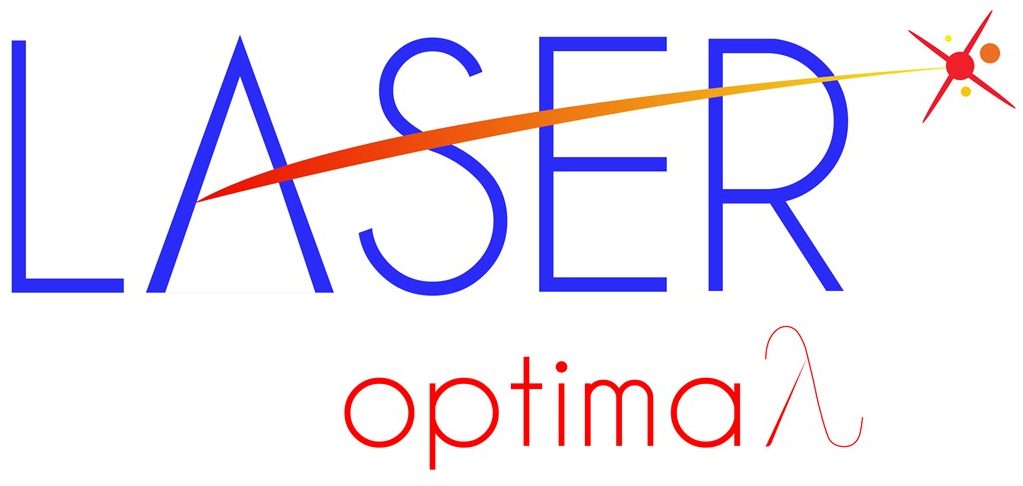LASER OPTIMAL is a human-oriented project, whose goal is the development of a novel strategy for safe tumor removal with laser therapy.
The new frontiers of laser therapy focus on the optimization of several technical aspects, such as measurement systems to monitor in real-time the thermal effect, to control the tissue damage; approaches for enhancing the selective absorption of the laser light by the target tissue; simulation-based tools, useful for the prediction of treatment outcome.
The rationale of LASER OPTIMAL is the control of the energy delivery in tumors, aiming to minimize the unwanted heat dispersion into the surrounding healthy tissue. The multidisciplinary team is working on the design of a patient-specific platform, useful to plan the treatment and to monitor the thermal outcome in real-time, in conjunction with the injection of nanoparticles for enhancing the selectivity of the treatment.
LASER OPTIMAL is a 6-year project funded by the ERC Starting Grant (Gant Agreement n. 759159) directed by Paola Saccomandi.
The Host Institution is the Politecnico di Milano, Partner Institutions are the Institute of Image-Guided Surgery (IHU) of Strasbourg, and the Beckman Research Institute of the City of Hope in California. The research team is based at the Department of Mechanical Engineering, in Milan.
The research activities are developed around six domains:
Laser-tissue interaction
The therapeutic effects of the laser for tumor treatment rely on the laser-tissue interaction. The wavelength, or photon energy, the spot size, the power, so consequently the power density, and the duration of irradiation (pulse duration) are the major parameters characterizing the incident light. When dealing with irradiated biological material, the capability of light to penetrate and deliver energy inside the target tissue via the optical properties is the foundation to therapeutic application. The near infrared light is provided by the therapeutic laser beam and the interaction between laser light and biological tissue is dependent on the parameters of the incident light and the optical properties of tissue itself. In particular, the absorbed optical energy behaves like a heat source and according to the thermal properties of tissue, heat diffusion occurs.
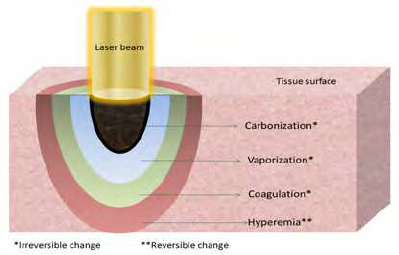
Fiber-optic based thermometry
Tissue temperature is the key-factor to assess the efficacy of the therapy. Small-sized, biocompatible and spatially distributed sensors are required to measure the temperature distribution in the tissue during the procedure, and serve as an indication for the clinician. Fiber-optic sensors meet the requirements needed for the accurate and minimally invasive temperature monitoring of the laser ablation. Moreover, they do not suffer from measurements errors during temperature measurements in laser thermal therapy.

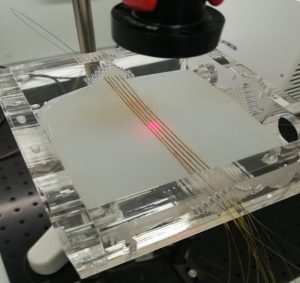
Image-based thermometry
Imaging has a major role in the development of image-guided therapies. With the aim to overcome the drawback of the invasiveness of sensors, tissue temperature is measurable by using either diagnostic images of temperature dependent tissue properties, e.g., Magnetic Resonance and Computer Tomography, or through other imaging systems able to correlate tissue emitted light with its thermal state, e.g. infra-red thermal cameras and spectral imaging systems. In this context, LASER OPTIMAL explores novel imaging technique for monitoring the therapeutic outcome in real-time, and further tailor the classical approaches according to the project goals.
Numerical modelling
The specificity of the platform to be developed by the LASER OPTIMAL team needs predictive tools for evaluating and optimize the effects of the laser light into the target organs. Computational models simulate the laser-based tumor treatment, considering also the presence of biocompatible nanoparticles. Different computational approaches are investigated: finite element models are developed through the modeling of the geometries of the tumor and of the surrounding structures, the choice of a suitable mesh, and the simulation of the heat transfer in tissue, exploiting Pennes’ bioheat equation. Also Monte Carlo-based approach are explored for simulating the interaction between photons and tissue loaded with nanoparticles.
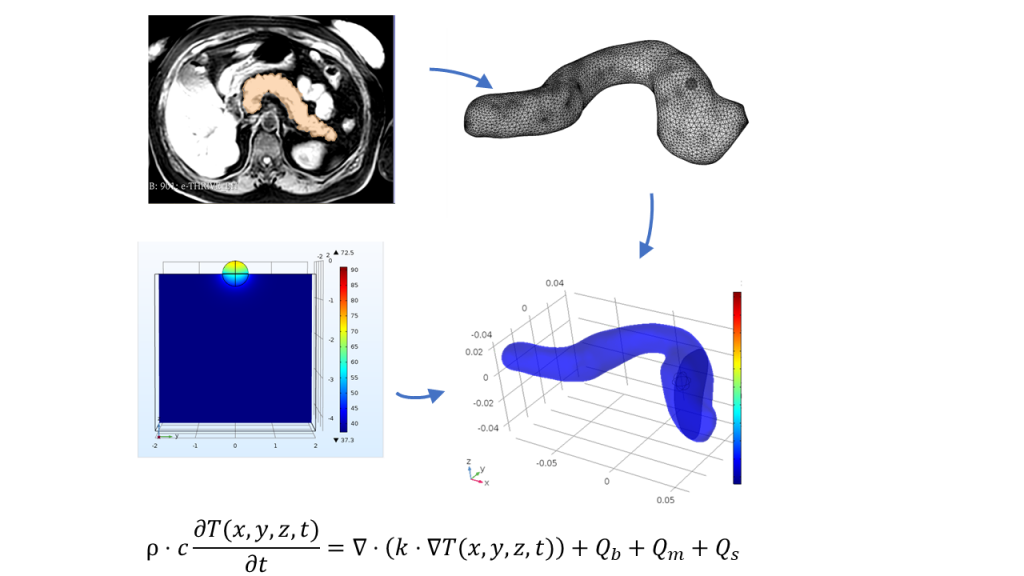
Nanotechnology
Nanotechnology represents an encouraging promise for minimally invasive cancer treatment. The combination with the laser ablation therapy paves the way towards a more controlled and safe removal of the unhealthy tissue. Nanostructures, such as nanoparticles and nanocomposites, exploit their magnetic or optical properties, according to the different external heat sources provided, to specifically enhance the heating capacity only in the regions of tissue, where cancer cells are located, so that the surrounding healthy tissue is spared. Among the large variety of nanostructures available for the project goal, LASER OPTIMAL is focusing on the gold nanorods. These rods are characterized by high absorption efficiency, which is described by the ratio between the absorption cross-section and the geometric cross-section.
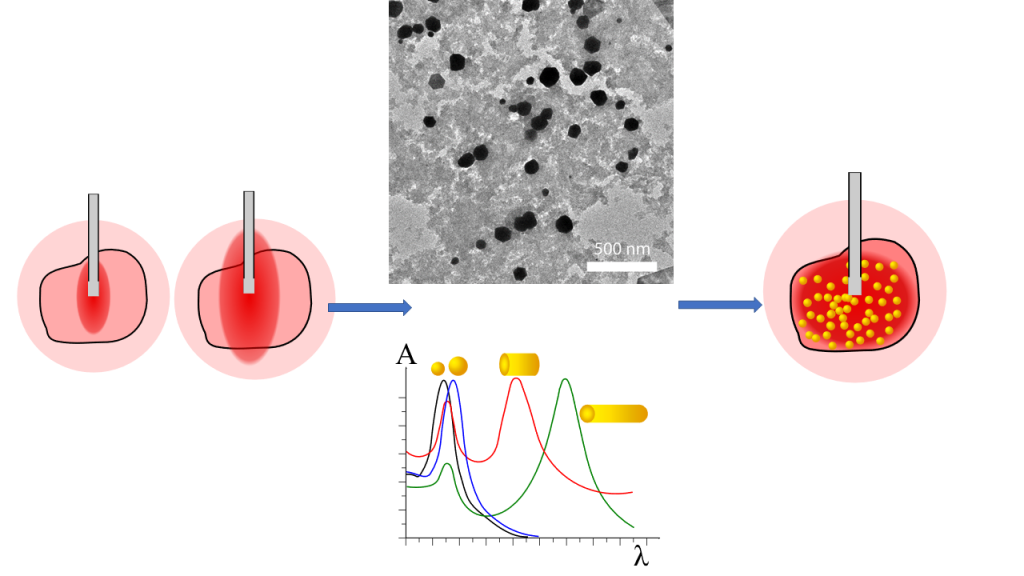
Translational research
The LASER OPTIMAL team is continuously in contact with clinicians and biomedical experts with the aim to foster the application of the project’s deliveries into clinics and to tailor specific requirements of the technological platform according to the medical needs.

